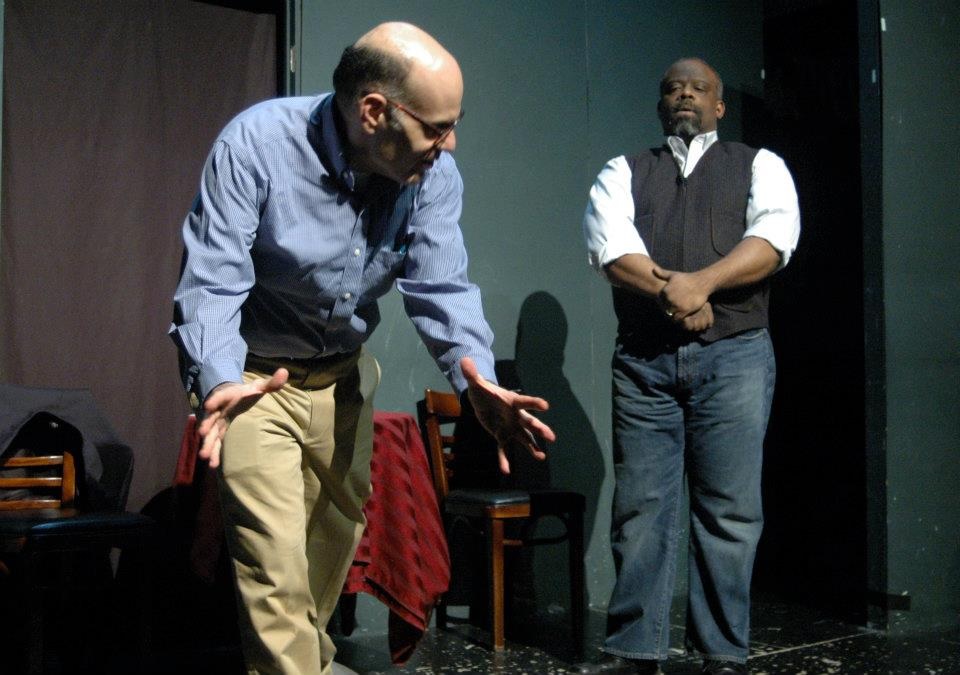5 Tips to Decide If You Should Walk-On in an Improv Scene

Nothing frustrates me more than watching a perfectly good scene be ambushed by an unnecessary walk-on.
We are all familiar with the scene where a couple is out to dinner at a restaurant and then the zany waiter ambushes the scene and the scene ends up becoming all about the zany waiter and has nothing to do with the relationship of the couple.
And we’ve all watched those “walk-on happy” groups that give no time or room for a scene to develop.
Walk-ons done right are a thing of beauty, like ballet. They should be there to support what’s happening on stage, not distract from it. In the wrong hands, they are a cluster fuck and do more harm than good.
I think walk-ons are overused, and I know my outlook on this subject is definitely old school, but in my opinion, a walk-on or tag out is not a good substitute for good scene work.
Today, I want to give you five very simple questions to ask yourself to help determine if a scene needs a walk-on.
1. Do the players need an environment?
This is usually easy to determine and can be of maximum service to the players in the scene. If two players come out and have no idea where they are after a few minutes, it is the perfect opportunity for a walk-on. Come in and place them in a specific environment, such as in a restaurant, in a hotel room, on an airplane – anywhere but “vagueland.” Then quietly leave the scene, because your job is done.
2. Is a character being called for?
Sometimes, two players will start a scene and they’ll reference another character, such as, “Your mother and I are really upset you didn’t come home last night.” We don’t have a mother in the scene, so this is your opportunity to be the mother. It doesn’t matter if a woman or a man plays the mother, we need a mother. You want to avoid where the players are desperately calling out for another character to join them three or four times before some one is brave enough to step up. I have also seen the opposite where players are trigger happy and think every time a character's name is mentioned is an opportunity for a walk on. Be aware that is some cases they will be referring to character and a walk on is not necessary.
3. Does something need to be heightened?
This is by far the trickiest one to do. Ask yourself if there is a game, premise or emotion in a scene that needs to be heightened. Can you do it gracefully, by adding a piece of information that will up the stakes? If so, it might be time for a walk-on. However, remember that you don’t have to jump into every scene. Sometimes a scene may not need heightening by you; they may be able to handle it themselves.
4. What is my motive?
I am guilty of this. Sometimes my confidence is low and I feel safer walking into a scene than initiating one myself. If you feel you are doing this, instead of looking for an opportunity to walk into a scene, how about following the fear and starting a scene yourself?
5. Does the scene need an edit?
I wish I could take credit for this advice: “Sometimes your best walk-ons are edits.” This is true, especially if the scene has been going on for a while. If the scene feels like it’s dragging and you have an instinct to walk on to change the energy, probably it would work better as an edit.
This list is just a beginning. How do you decide if you should use a walk-on in an improv scene? If you’ve got any tips, please share them in the comments section below.
Calling all actors! Sign up now for Jimmy's Improv for Actors Workshop on May 19, 2024.


This is by far one of the things I've struggled with. I almost never know if a scene needs a walk on or if I should add something. These tips are fantastic.
Great reminders and some new things I hadn't thought about. Thanks Jimmy.
Thanks for the great suggestions, Jimmy. I also believe that walk-ons can be used for painting the scene - if the players are at the movies, at a restaurant, driving down the road - a new player can add to that scenery. Not there to change or even necessarily interact with the players but simply to add more flavor to the environment.
Gracias! Joseph
A walk on could be used to change the energy of the show, potentially to inject a new interesting character without necessarily heightening any existing game. For example in a monoscene or narrative style form, if the first 3 or 4 characters seen are more typical characters, the next walk on could be a zany or unexpected character, perhaps serving the same purpose as a group game palate cleanser in a Harold. But this type of character would have to be sparingly used and with judgment so as to not significantly distract from the overarching themes previously established.
This is great advise, Jimmy. One night, early in my improv classes, I jumped into a scene that (looking back) clearly did not need me. My instructor called it out after the scene, which was fine. He said, "They didn't need your character in the scene," and left it at that. He did not give guidelines as to "why not" or "how to know." I shied away from walking into scenes for a very long time. I just initiated them. This is helpful, even now. Thanks, Jimmy!
Thank you so much for this. Phenomenal rules of thumb 🙂
Yes, eye-opening, yet practical rules. Thank you, Jimmy
Perfect, practical advice. Thanks Jimmy. Go Cubs.